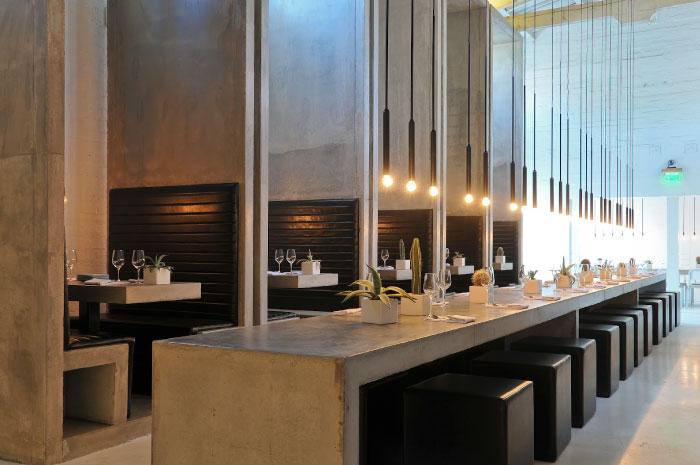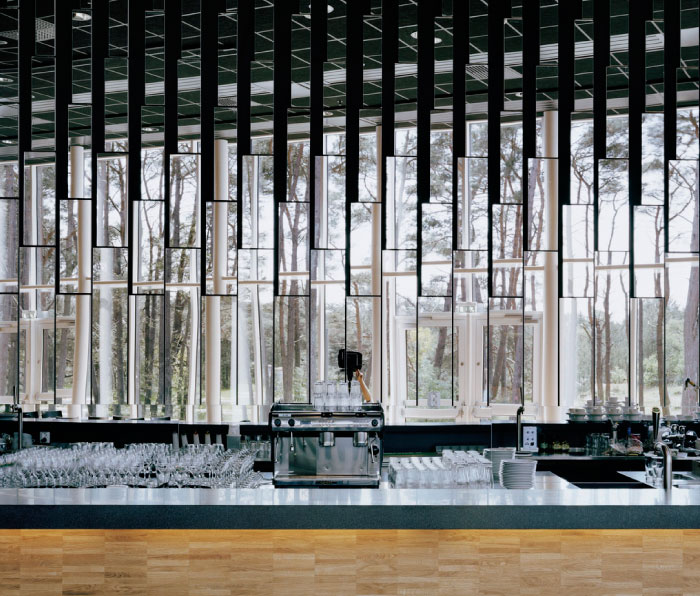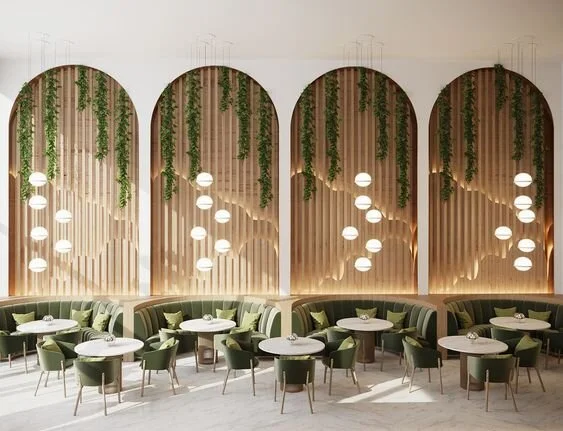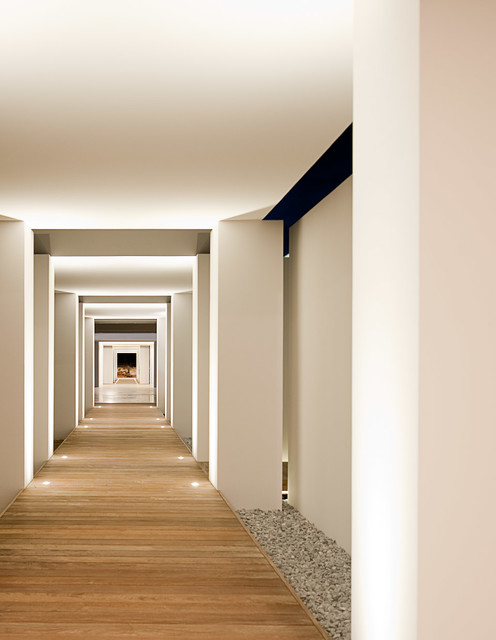Rhythm - Principles of Design Rhythm rhythm - A visual tempo or beat. Repetition is the repeated use of a particular design element or structure.

Principles Of Interior Design Part 2 Rhythm
The barajas airport by richard rogers and estudio lamela is an excellent example of rhythm achieved through repetition and progression of colour.

. With a curved line your eye gently transitions or travels from one object to another. Transition Curved lines are a good example of this type of rhythm. Put the design element of rhythm into practice.
An example of repetition is pictured above. What are examples of establishing a rhythm in design. Repetition is apparent in the wooden beams in the lighting fixtures and in the placement of the windows.
This helps in creating a visual perception of the interiors at the best level. Lets take a look at some classic interior design concept examples prevalent in the design industry. For example walking in a hallway with continuous floor lights is a classic example of repetition in interior design.
A common example is alternating black and white pillows on a sofa. In interior design rhythm is all about repetition of design elements that help to create movement within a space. Stairs go in a circle around a center point.
The principles of interior design are balance emphasis rhythm proportion and scale and harmony and unity. Traditionally there are three types of rhythm you can use in your interior design. Rhythm may be applied in bold statements that make an obvious suggestion about a path of travel or more subtly applied to move your eye about a space without you even realizing the rhythm is there.
In interior design rhythm is all about repetition of design elements that help to create movement within a space. What is gradation in interior design. Opposition Using opposites can create an interesting and pleasing effect in your decor.
You can establish a rhythm by using a color in the pillows picking it up in a painting and echoing it again in a rug. There are different ways to create a balanced look including symmetry asymmetry and radial balance. When applied to interior design each principle is a result of several smaller elements.
Similarly how do you get rhythm in. Youve heard designers talk about moving the eye through the space. The importance of rhythm in interior design Rhythm is one of the basic principles in interior design and commonly used to help the eyes move around the room in an organized manner.
Scale. Symmetrical Balance is a traditional. Rhythm in interior design is all about the visual repetitions of patterns.
Radiation is an element of rhythm in interior design when the features in the room are balanced and repeated around a center point. The eye wants stimulation and variety but this needs to be balanced with the repetition of other elements. While these principles may seem fairly simple at first glance they become far more complex when applied to the design of interiors.
Repetition in interior design helps in building uniformity and a sense of stability in the eyes of the viewers. You can establish a rhythm by using a color in the pillows picking it up in a painting and echoing it again in a rug. In addition to this rhythm plays an important role in interior design as it helps in how the viewer perceives the space in terms of functionality and appearance.
One example is establishing a rhythm by using colorful pillows. What is repetition color. Transition Curved lines are a good example of this type of rhythm.
There is actually more to the interior design theory of rhythm. Russian stacking dolls are an example of gradation from large to small. Interior design balance is something that all designers pay very close attention to because it can make or break a spaces design.
Think of a camelback sofa for example a curved headboard or an archway. Aside from colour you can repeat the use of the same textiles or the placement of similar objects around the room. The principles of interior design include.
The more you do the more confidence you will feel about using rhythm in your home and the better decorator you will be. Using colors opposite each other on the color. Put together a small vignette that has great rhythm.
Echo it again in the rug and another time in a painting. Transition Rhythm through transition gently leads the eye through a continuous uninterrupted flow from one area within a space to another. Then take a step.
Use opposite elements such as black and white pillows to create a rhythm. This is an example of Flowing Rhythm. Discover 20 Questions and Answers from WikiLivre.
Repetition can take the form of an exact duplication such as a pattern background image. Repetitive rhythms are easy to create with the same colour echoed in a throw pillow a rug and a frame on the wall. Gradation is the use of a change in size of objects from large to small or a change in color from light to dark.
Rhythm is defined as recurrence continuity or organized movement. Circular table with a vase of flowers and chairs radiating off the table. Repetition and Rhythm in Interior Design.
In interior design there are five principles of rhythm. There are three ways to create rhythm in interior design. 7 Websites That.
This includes radiation contrast transition gradation and repetition. Repeating a continuous pattern throughout the space to create a sense of stability.

Principles Of Interior Design Part 2 Rhythm

What Is Rhythm In Interior Design Learn To Apply Tilen Space

Diving Into The Principles Of Design Ccdg

How Does Rhythm In Design Engage Your Eyes Your Own Unique Decor

Basic Interior Design Principles Everyone Should Know Brumbaughs Fine Home Furnishings

5 Ways Rhythm Engages Your Eye

7 Principles Of Interior Design Contrast Rhythm More Zameen Blog

What Is Rhythm In Interior Design Learn To Apply Tilen Space
0 comments
Post a Comment